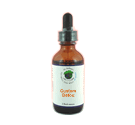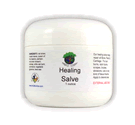|
|
Chaetomium
 |
Chaetomium is a fungal genus which contains around 80 known species of mold. These molds are among the group of molds which can cause health problems in humans as a result of prolonged exposure. These fungi like to live on cellulose, and are found on wood, compost, sheet rock, straw, and similar materials. The fungal colony can take as long as three weeks to mature in a cold environment, producing spores which spread the fungus via the wind. The colony starts out white, turning dark gray to olive when it is mature, with a cottony texture. The spores of Chaetomium fungi have a very distinctive lemon shape which makes them easy to identify, and the fungus has a signature musty odor.
Chaetomium globosum is the species most commonly found indoors. This species is of particular interest because it appears to produce mycotoxins, compounds which are detrimental to human health. These fungi have been definitively linked with allergies in people who are sensitive to molds. They appear to produce mutagenic mycotoxins which interfere with DNA replication in organisms like humans and other animals. Chaetomium are found on a variety of substrates containing cellulose including paper and plant compost. Several species have been reported to play a major role in the decomposition of cellulose-made materials. These fungi are able to dissolve the cellulose fibers in cotton and paper which causes the materials to disintegrate. This process is especially rapid under moist conditions.
This fungus is reported to be allergenic and a toxin. Unlike most mold pathogens, there is medical evidence to suggest that people who are exposed to Chaetomium may be predisposed to permanent neurological damage of the myelin sheath. A noticeably high incidence of autoimmune diseases have been linked to exposure of this mold such as Multiple Sclerosis, Lupus, etc. It has also been linked to certain forms of cancer. Similar to other fungal exposure, it can also cause permanent DNA damage. Fatalities due to Chaetomium atrobrunneum have been documented. Additional health issues like brain abscess, peritonitis, cutaneous lesions, and onychomycosis may also develop due to Chaetomium.
|
|
|
 Arthropod/Vector
Bacteria
Chemicals
Fungus /Mold
/ Yeast Metals Parasites Virus Other
Arthropod/Vector
Bacteria
Chemicals
Fungus /Mold
/ Yeast Metals Parasites Virus Other



